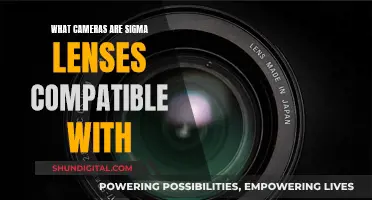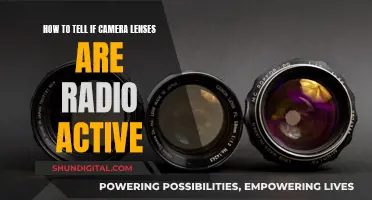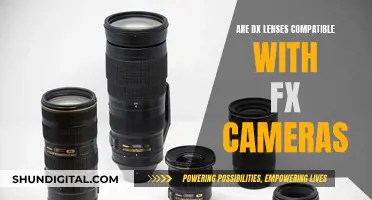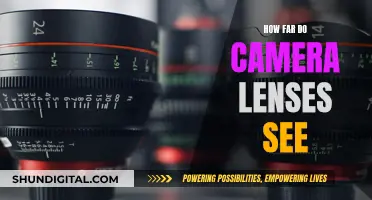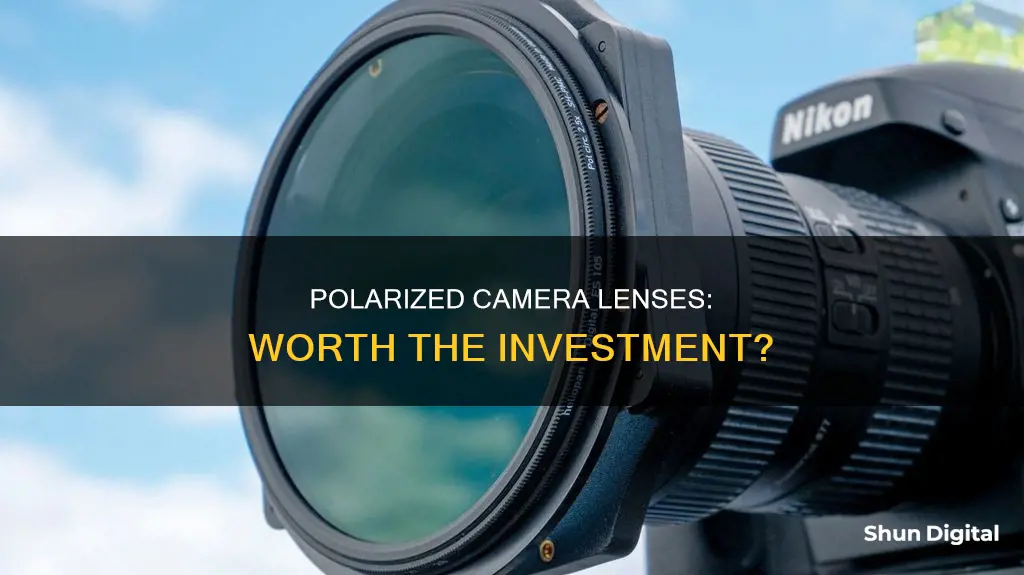
Polarized lenses are a popular choice for many, but are they worth the extra cost? Polarized lenses have a special coating that reduces glare, especially on reflective surfaces like water, snow, or asphalt. This makes them a good investment for those who spend a lot of time outdoors, driving, or participating in sports such as golf or running. They can also enhance colour vibrancy, increase contrast, and reduce eye strain. However, they are not recommended for downhill skiing or snowboarding as they may reduce the ability to distinguish between fresh snow and glare ice. Additionally, polarized lenses can affect the visibility of LCD screens and instrument panels, making them unsuitable for pilots or those operating heavy machinery. Ultimately, the choice between polarized and non-polarized lenses depends on personal preference and intended use.
| Characteristics | Values |
|---|---|
| Purpose | To reduce glare from reflective surfaces |
| How it works | Lenses are coated in a chemical filter that blocks out horizontal wavelengths of light |
| Benefits | Increases vibrancy of colours, reduces eye strain, enhances clarity and contrast, reduces risk of accidents |
| Use cases | Driving, fishing, golfing, running, hiking, boating, spending time in the snow |
| Non-use cases | Downhill skiing, snowboarding, operating machinery, piloting, night-time activities |
| Cost | Priced slightly higher than non-polarized lenses |
What You'll Learn

Polarized lenses reduce glare and enhance colours
Polarized lenses are treated with a chemical that filters out light. The filter is applied vertically, so vertical light can pass through but horizontal light, or glare, cannot. This is because when light bounces off a horizontal surface like snow, water, or the roof of a car, it only vibrates in one direction, horizontally. This process is called polarization.
Polarized lenses are especially good at blocking out glare on reflective surfaces. Glare can be a nuisance and impair depth perception, but it can also distort your view and colours, and cause temporary blindness. Polarized lenses can make colours appear more vibrant, increase contrast, and reduce the symptoms of eye strain. They are particularly useful for outdoor activities such as hiking, picnicking, boating, golfing, and running. They are also good for driving as they reduce glare from the sun, car hoods, bumpers, and the road itself.
However, polarized lenses are not recommended for downhill skiing or snowboarding as they may make it harder to distinguish between fresh snow and glare-producing ice. They are also not ideal for looking at LCD screens, which emit polarized light.
The Truth About Camera Lenses: Glass or Plastic?
You may want to see also

They can be dangerous in certain conditions
Polarized lenses can be dangerous in certain conditions, and there are some instances where they are not recommended.
Polarized lenses work by blocking out glare from light reflecting off horizontal surfaces, such as water, snow, or roads. This is achieved by applying a chemical filter vertically, so that vertical light can pass through, but horizontal light bounces off. This can be an issue when it comes to LCD screens, which emit polarized light. If your car dashboard, phone, or watch uses an LCD display, you may find that polarized lenses impair your vision and make it harder to see these screens. For this reason, pilots do not wear polarized lenses, as they need to be able to see light reflected off other planes, and monitor various displays.
In addition, some experts warn that wearing polarized lenses while downhill skiing or driving in winter weather conditions could be dangerous. This is because the lenses may reduce your ability to distinguish between regular snow and dangerous ice.
Therefore, while polarized lenses offer many benefits, such as reducing glare and enhancing clarity of vision, they may not be suitable for all activities and conditions. It is important to consider the potential drawbacks and take the necessary precautions to ensure safe use.
Camera Lenses: Reselling and Buying Used
You may want to see also

They are more expensive than non-polarized lenses
Polarized lenses are often priced slightly higher than non-polarized lenses. This is because polarized lenses have a special coating that reduces glare on reflective surfaces, which can be especially helpful when driving or spending time near water. The extra cost is worth it for many, especially athletes, as glare can be a nuisance and even impair depth perception.
The price difference between polarized and non-polarized lenses can be attributed to the additional cost of the special coating applied to polarized lenses. This coating is designed to filter out horizontal light waves, which are the main cause of glare. By blocking these light waves, polarized lenses can provide clearer vision and reduce eye strain.
The benefits of polarized lenses are particularly noticeable for those who spend a lot of time outdoors or in reflective environments. For example, fishermen and other athletes often prefer polarized lenses as they can reduce glare from water, pavement, or snow. This can improve performance and make it easier to see details that would otherwise be obscured by glare.
Additionally, polarized lenses can enhance colour vibrancy and increase contrast. This can be especially beneficial for outdoor activities such as hiking, picnicking, or boating. The enhanced colour and contrast provided by polarized lenses can also improve safety, as it can help with depth perception and make it easier to spot potential hazards.
While polarized lenses offer these benefits, they may not be necessary for everyone. Some individuals may prefer non-polarized lenses due to the cost difference or because they do not spend as much time in environments where glare is an issue. Ultimately, the decision between polarized and non-polarized lenses depends on personal preferences, budget, and the specific needs of the individual.
Lenses: The True Power Behind Photography
You may want to see also

They are not suitable for looking at LCD screens
Polarized lenses are not suitable for looking at LCD screens. This is because LCD screens emit polarized light, and if the polarization of the screen and the lenses are in opposite directions, the screen will appear black. This can be a problem for pilots, who need to be able to see light reflected off other planes in the sky, and for people who work with certain types of outdoor screens, such as those used in car displays, instrument panels, ATM screens, and gas station pumps.
Polarized lenses can also make it harder to see patches of ice, especially in low-light conditions. The lenses' enhanced glare reduction can reduce your ability to distinguish between glare-producing ice and regular snow. For this reason, it is not recommended to wear polarized lenses while downhill skiing or snowboarding, or while driving in conditions where there might be black ice.
While polarized lenses are not recommended for the above use cases, they can be very beneficial in other situations. They are especially useful for reducing glare from the sun and making colours appear more vibrant. They can also increase contrast and reduce the symptoms of eye strain. These properties make polarized lenses ideal for outdoor activities such as fishing, hiking, picnicking, boating, mountain biking, golfing, and running. They can also be safer for daytime driving, as they reduce glare from light reflecting off car hoods, bumpers, and the road.
Olympus 4/3 Camera Lenses: Discontinuation and What's Next
You may want to see also

They can be useful for driving
Polarized lenses are treated with a chemical that filters out light. The filter is applied vertically, so vertical light can pass through, but horizontal light cannot. This means that polarized lenses are particularly good at reducing glare, which can be dangerous when driving. Glare can cause discomfort and pain in your eyes, which can lead to headaches, migraines, and even car accidents.
Polarized lenses are especially useful for driving because they reduce glare from the sun, but they can also make colours appear more vibrant, increase contrast, and even reduce the symptoms of eye strain. This means that when driving, you can see the road more clearly, and your eyes will be more comfortable.
Polarized lenses are also good for driving because they reduce glare from reflective surfaces such as the road, car hoods, and bumpers. This means that when driving during the day, polarized lenses can mitigate glare and make for safer, less distracted driving.
However, polarized lenses are not recommended for driving at night or in low-light conditions. This is because they can make dark environments even darker, and they may also make it harder to see LCD screens and instrument panels in your car.
Camera Lenses in China: Cheaper or Expensive?
You may want to see also
Frequently asked questions
Polarized lenses have a special coating that reduces glare on reflective surfaces.
Polarized lenses are worth it if you spend a lot of time outdoors, driving, or near reflective surfaces like water and snow. They can also help with eye strain and make colours appear more vibrant. However, they may not be suitable for certain activities like downhill skiing or snowboarding, as they can reduce your ability to distinguish between ice and snow.
Polarized lenses have a chemical filter applied vertically, allowing vertical light to pass through while blocking horizontal light, which is the kind of light that creates glare.
Polarized lenses can make it difficult to see certain LCD screens and instrument panels. They can also reduce your ability to spot glare, which may be important for certain activities like skiing or snowboarding. Additionally, polarized lenses can make dark environments even darker, so they are not suitable for driving at night.


